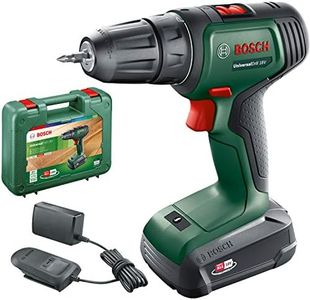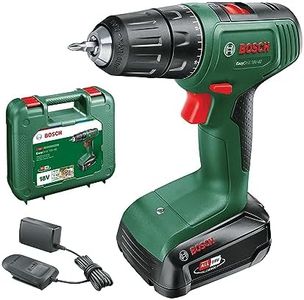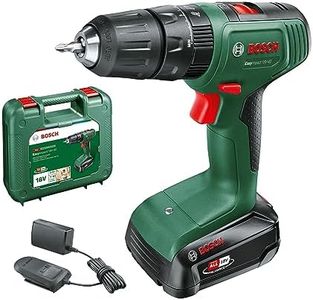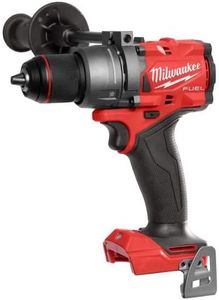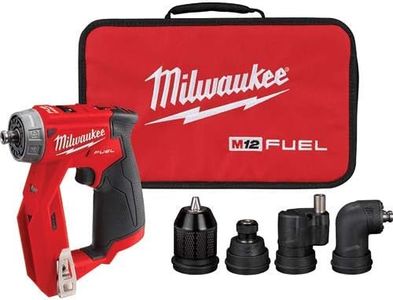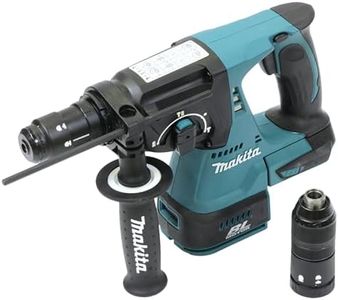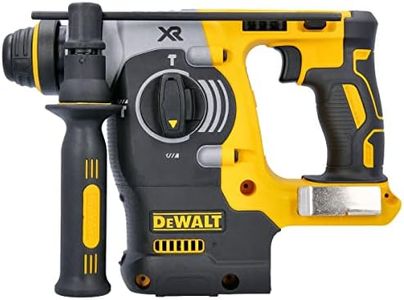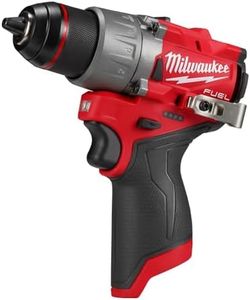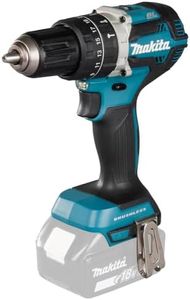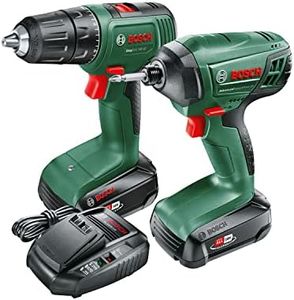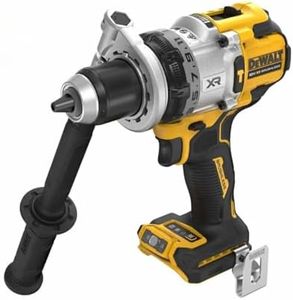We Use CookiesWe use cookies to enhance the security, performance,
functionality and for analytical and promotional activities. By continuing to browse this site you
are agreeing to our privacy policy
10 Best drills
From leading brands and best sellers available on the web.Buying Guide for the Best drills
Choosing the right drill comes down to understanding how you'll use it most. Drills are versatile tools for making holes, driving screws, and sometimes even mixing or sanding with attachments. The best drill for you depends on the kind of projects you plan to tackle, how often you’ll use it, and your preferred balance between power and weight. By comparing a few important specs, you’ll find a drill that’s suited to your needs and comfortable to use.Power Source (Corded vs. Cordless)The power source tells you how the drill gets its energy: plugged into the wall (corded) or running on a battery (cordless). Cordless drills are popular for their mobility and convenience, since there’s no cord holding you back, but they rely on battery power that can run out during long jobs. Corded drills need to be plugged in at all times, which limits movement but means you’ll have constant power. If you often work away from power outlets or need quick jobs around the house, cordless offers more flexibility. For extended heavy-duty work in one place, like drilling lots of holes in tough material, a corded drill may be preferable.
Voltage or AmperageFor cordless drills, voltage measures how powerful the drill is; for corded, it’s usually amperage. Higher voltage (such as 18 or 20 volts) gives more strength for bigger holes and tougher materials but can also make the drill heavier. Lower voltage (like 12V) or lower amperage models are lighter and easier to use for small jobs. If your main use is light repairs or simple assembling, go for lower voltages/amperages. For demanding DIY or construction work, more power will serve you better.
Chuck SizeThe chuck is where you insert the drill bit. Common sizes are 3/8-inch and 1/2-inch. A larger chuck size means you can use bigger and stronger bits, which is helpful for heavy-duty tasks. If you mostly do small to medium household projects, a 3/8-inch chuck is usually enough. If you need your drill for bigger projects or want the option to use larger bits, look for a 1/2-inch chuck.
Speed SettingsDrills can come with single or multiple speed settings, sometimes adjustable by a trigger or a switch. Lower speeds help when driving screws so you don’t strip them; higher speeds are better for drilling holes quickly. If you want more control and plan to use your drill for both drilling and screwdriving, choose a model with variable speed settings. For simple tasks, single-speed may be sufficient.
Torque and Clutch SettingsTorque is the twisting force the drill can produce, which helps drive screws or drill into tougher materials. The clutch lets you adjust how much torque is applied, so you can avoid over-driving screws or damaging material. Drills with adjustable clutch settings give you more versatility, especially if you work with both soft and hard materials. If you only drill holes and rarely drive screws, fewer clutch settings may be fine; otherwise, more clutch options give you better control.
Weight and ErgonomicsWeight and how the drill feels in your hand make a big difference over long sessions. A lighter drill is easier to handle, especially if you’ll use it above your head or for lots of shorter jobs. Heavier drills provide more power and stability for tougher jobs. Try to pick a drill that feels comfortable for your typical type of project, considering both its weight and grip design.
